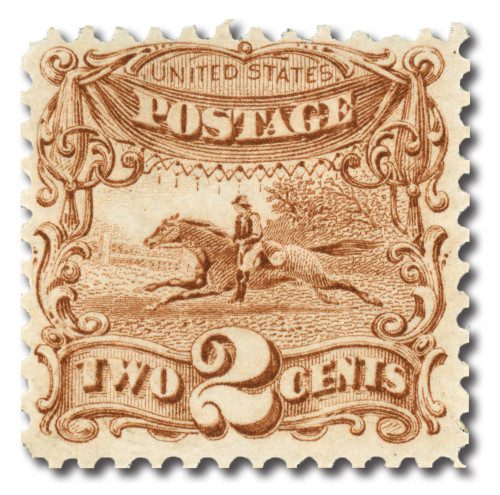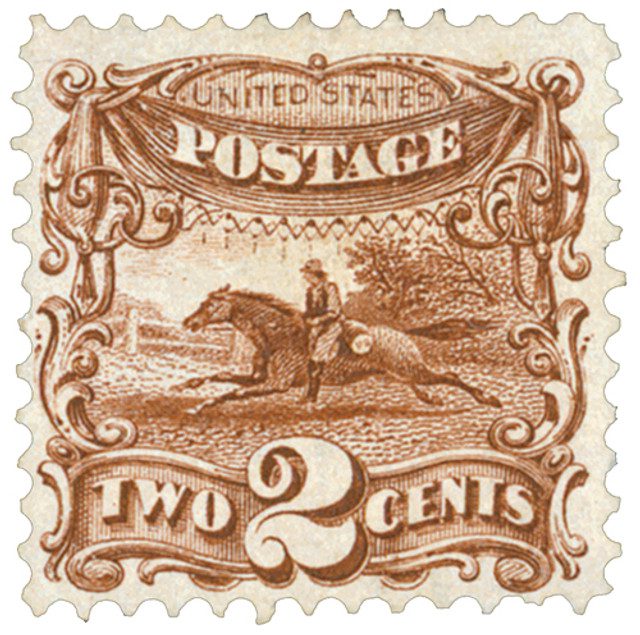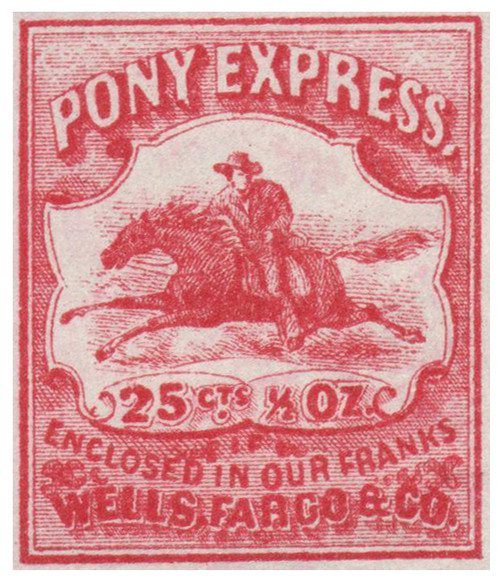
After just eighteen months of daring rides across the American frontier, the Pony Express ceased operations on October 26, 1861. Though short-lived, it became one of the most legendary chapters in the history of the American West.
In early 1860, William Russell, Alexander Majors, and William B. Waddell set out to revolutionize mail delivery. At the time, messages and letters to the western territories could take weeks—sometimes months—to arrive by stagecoach. Their new company, the Central Overland California and Pikes Peak Express, promised a faster and more reliable way to connect East and West. The idea was simple but daring: use a relay system of mounted riders and fresh horses to speed the mail across nearly 2,000 miles of wilderness.
In less than two months, the company built 184 relay stations, each about 10 to 15 miles apart, stretching from St. Joseph, Missouri, to Sacramento, California. They purchased more than 400 of the fastest horses available and hired around 80 riders, most of them wiry young men under eighteen who could ride hard and fearlessly. The first official run began on April 3, 1860, with a rider leaving St. Joseph carrying a mochilla—a leather mail pouch—with a message of congratulations from President James Buchanan to the governor of California. Just ten days later, another rider galloped into Sacramento, completing the first cross-country trip in record time.
The Pony Express quickly gained fame for its speed and reliability. Riders were paid $25 a week, a high wage at the time—equivalent to more than $5,000 today. But they earned every penny. The route was long and perilous, cutting through rugged terrain, blistering deserts, and mountains often blanketed in snow. Riders faced violent storms, wild animals, and attacks from outlaws or Native Americans defending their lands. Yet, the mail almost always arrived.


The average mail run took eight to ten days, more than a week faster than the Overland Mail stagecoaches. The fastest delivery ever recorded came in November 1860, when riders carried word of Abraham Lincoln’s election from Missouri to California in just seven days and seventeen hours. Over the course of its operation, the Pony Express carried an estimated 35,000 letters, charging initially $5 per half-ounce, later reduced to $1—a small price for such speed in an age before the telegraph.
Despite its success in speed and reputation, the Pony Express struggled financially. Maintaining hundreds of horses, stations, and employees across thousands of miles was incredibly expensive. Even as riders raced across the plains, a new invention was on the verge of making their daring rides obsolete: the transcontinental telegraph.
On October 24, 1861, the Western Union Telegraph Company completed the first telegraph line across the United States. Messages that once took over a week by horseback could now be transmitted in minutes. Two days later, on October 26, 1861, the Pony Express officially ended. Its final deliveries were made quietly, almost overshadowed by the excitement surrounding the new era of instant communication.
Years later, the spirit of the Pony Express was revived in a different form. In Virginia City, Nevada, during the 1860s, a new route known as the Virginia City Pony Express was created to carry mail and messages between the booming Comstock mining towns and nearby communities. While smaller in scale and scope, it honored the daring riders who had once conquered the wild trails of the West.
Today, the legacy of the Pony Express endures in annual reenactments and historical trails, where riders once again carry the mochilla across the plains. Though the telegraph ended its original mission, the legend of the Pony Express lives on—reminding us of a time when courage and a fast horse were the quickest connection between two worlds.
Click here for more Pony Express stamps and covers.
| FREE printable This Day in History album pages Download a PDF of today’s article. Get a binder or other supplies to create your This Day in History album. |
Discover what else happened on This Day in History.




Fantastic read,and great history for anyone outside of the USA.
Very interesting and nice history about the early days of post mail in USA. Thanks
This is really good..
Amazing how far we’ve come in 154 years! Interesting to see how brave they were to take risks in the wild west to deliver mail. Today, with the “electronic risks”, we may go back to paper mail, and save stamp collecting. Keep up the good work. We learn more in these lessons than we did in school. Thanks
Going postal had a whole different meaning back then.
It’s a great story. But according to the Pony Express exhibit in the Smithsonian Postal Museum in Washington, DC,, the stations were not 25 but 10 miles apart – the limit for a galloping horse. Horses were changed every 10 miles and riders changed every 100 miles.
And a lot of people think that .49 cents for postage is too much. All-in all, another great article about the History of our nation in postage stamps!!!
interesting american history ..
Great historical facts of great ideas and great men.
Please…keep this up..learning a lot tks
In all of those 18 months the Pony Express lost only 1 bag of mail. Incredible since they had to pass through some hostile country.
That’s an amazing stat Ed. They lose that many bags each hour of each day now. Come to think about it all, the Pony Express was faster than today as well!
A wonderful and insightful article about mail delivery. A great history lesson.
There were other famous Pony Express riders besides Buffalo Bill. The most famous (to me, at least) was Johnny Frye, the first westbound rider out of St. Joe in April, 1860. At the same time, another rider began the trip eastward out of Sacramento–his name was Harry something-or-other–I can’t remember his last name. Another famous name was Pony Bob Haslam, who was chased by Indians through several relay stations in Nevada, including one which is now South Lake Tahoe–there is a statue of him just outside Harrah’s casino.
However, none can compare with Johnny, who rode for about a ;year until the Civil War Started, then joined the Union Army. He was bushwacked by Southern renegades in 1863–he was just 23 years old.
Johnny Frye was my great-great-uncle. My maternal grandfather, John Frye (1859-1913), was his namesake.
Thank you for sharing your connection to history.
Mr. Woodfill,
I too am a relative of Johnny Frye and wish his name appeared on a US stamp. It does, however, appear on foreign stamps: one from the Maldives and another I will have to check. A Frye cousin has both these stamps, which I envy!
Thanks for sharing that. A small world isn’t it?
If $25.00 equates to $4,600, then a $5.00 letter would equate to $920.00.
$25.00 was closer to $625.00 today.
What is your source?
Thank you for this information. Please keep it coming.
Your history lessons are good for any history buff, whether a stamp collector or not, and the comments from those who leave them give even more credence to this history, for example, those about Mr. Johnny Freye. As a stamp collector and a history buff….I thank-you.
Yes, the Western Union seemed to stop the Pony Express, but mail still needed to be delivered. Did it revert back to stagecoach delivery only?
This is fascinating to read about. The words don’t really convey what those riders went through to get a letter to Aunt Pearl. It’s not representative of who these guys were and what they believed. What a great read. Thanks so much, it brings our history into perspective.
Need more history items with stamp interest.
Why PONY? Express? A pony is a very small horse, and I do not think they mainly used ponies?